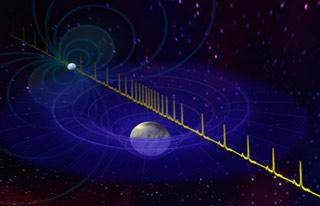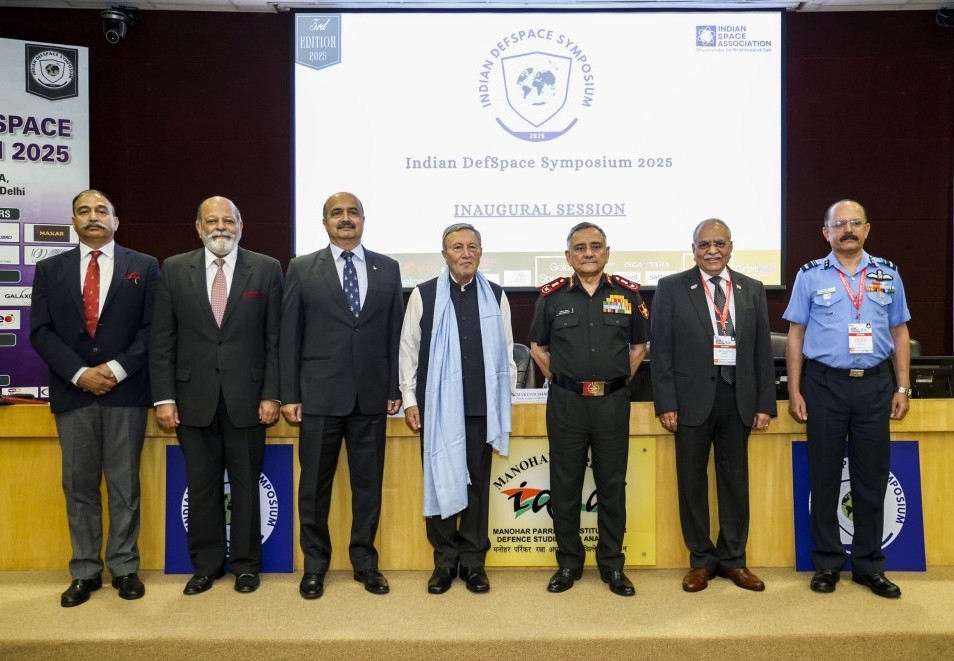
Pulses from neutron star (rear) are slowed as they pass near foreground white dwarf. This effect allowed astronomers to measure masses of the system. Photo: Bill Saxton, NRAO/AUI/NSF.
WASHINGTON (BNS): Astronomers using the US National Science Foundation's Green Bank Telescope (GBT) have discovered the most massive neutron star, a discovery with strong and wide-ranging impacts across several fields of physics and astrophysics.
Neutron stars are the remains of massive stars that exploded in a supernova and then collapsed in on themselves so tightly their protons and electrons are crushed down to neutrons.
Neutron stars are so dense that a thumbnail-size piece of material would weigh millions of tonnes.
"This neutron star is twice as massive as our Sun. This is surprising, and that much mass means that several theoretical models for the internal composition of neutron stars now are ruled out," Paul Demorest, of the National Radio Astronomy Observatory (NRAO), was quoted as saying in a NRAO news release.
The scientists used an effect of Albert Einstein's theory of General Relativity to measure the mass of the neutron star and its orbiting companion, a white dwarf star.
The newly discovered star is also a pulsar, emitting tightly focused beams of radio waves that sweep through space as it rotates. This pulsar, called PSR J1614-2230, spins 317 times per second, and the companion completes an orbit in just less than nine days. The pair, some 3,000 light-years distant, are in an orbit seen almost exactly edge-on from Earth. That orientation was the key to making the mass measurement.
As the orbit carries the white dwarf directly in front of the pulsar, the radio waves from the pulsar that reach Earth must travel very close to the white dwarf. This close passage causes them to be delayed in their arrival by the distortion of space-time produced by the white dwarf's gravitation. This effect, called the Shapiro Delay, allowed the scientists to precisely measure the masses of both stars.
"We got very lucky with this system. The rapidly-rotating pulsar gives us a signal to follow throughout the orbit, and the orbit is almost perfectly edge-on. In addition, the white dwarf is particularly massive for a star of that type. This unique combination made the Shapiro Delay much stronger and thus easier to measure," said Scott Ransom, also of NRAO.
The researchers expected the neutron star to have about one and a half times the mass of our sun, but their calculations of its mass were a revelation.
"It is amazing to me that one simple number - the mass of this neutron star - can tell us so much about so many different aspects of physics and astronomy," added Ransom.
 Previous Article
Previous Article Next Article
Next Article













The Indian Air Force, in its flight trials evaluation report submitted before the Defence Ministry l..
view articleAn insight into the Medium Multi-Role Combat Aircraft competition...
view articleSky enthusiasts can now spot the International Space Station (ISS) commanded by Indian-American astr..
view article